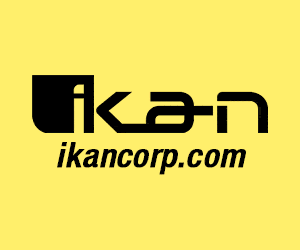Column: The whats, wheres and hows of the media supply chain

Weekly insights on the technology, production and business decisions shaping media and broadcast. Free to access. Independent coverage. Unsubscribe anytime.
“Media supply chain” is a phrase we frequently see around industry tradeshows and publications, but what does it actually mean, why do I need one, and how do I implement one? In this series we start from the ground up, looking at the what – what does the term mean and what does it encompass. The where – where cloud, “on prem” and hybrid fits in, and the how – how to actually implement one. Finally, we’ll look at the future of the supply chain and its place in the wider video ecosystem.
Applying modern manufacturing principles to media: fundamentals of the media factory and media supply chain
A (digital) media supply chain can be any production and distribution workflow system where media files and their associated metadata needs to be managed based on the current business model. But we’ve been producing and distributing video for over a century, and media asset management (MAM) systems have been around for over 20 years, managing media files and associated metadata.
The one thing that’s changed then, or at least evolved, is the business model; the type of media, how we consume it and how much we consume has all changed rapidly over the last decade and the business models associated have had to evolve to keep pace. We won’t look at those trends in detail here but, in short, it has meant we need to produce more media, more versions of that media and, in many cases, get that media to market quicker.
This means we can look to other “mass production” and distribution processes and apply those to our media workflows.
Henry Ford is famously quoted as saying a customer could have “any color that he wants, as long as it is black!” In reality, the Model T was actually available in quite a wide range of colors, but his point was that the success of the automobile would be in the efficiency of its production and the key to that efficiency was the standardization of parts and processes.
Standardization is critical to efficiency and eliminating errors/waste in media workflows too, whether that’s in interfaces, file formats or metadata structure, and we’ll look into this further in a later article.
Eliminating waste is at the core of the Toyota Production System, the pre-cursor to the LEAN methodology. The Toyota Production System, or TPS has two central principles, just-in-time and jidoka.
Just-in-time means making only what is needed, only when it’s needed, and only in the amount that it is needed. In the manufacturing process, it means only having the components arrive in your facility as you need them and only in the quantity to produce the quantity of end product you need – to exactly satisfy customer demand.
If we think about this in a media context, we can see how this principle presents the opportunity to eliminate significant waste. For example, consider the number of versions and different file formats required to fulfill the multitude of distribution platforms many workflows now need to support. If we were to create and store all these different versions persistently, the storage requirements would be significant. If, by contrast, we only store the video, audio, caption and metadata in a componentized mezzanine form, and only create the distribution versions as they are needed for delivery, we can dramatically reduce the storage required and thereby eliminate waste.
The second principle, jidoka, translates as “automation with a human touch”. Without automation, it would not be possible to reach the level of productivity required in media workflows to meet business needs. However, media “quality” is hugely subjective and is dependent on human creativity and judgment in the production and distribution process. Therefore, jidoka is critical in the media supply chain too and any media workflow platform must have the interfaces and tools to allow for the “human touch.”
The TPS also includes other concepts such as visual controls to make sure no problems are hidden. In the Toyota application, this included large dashboards and check sheets so that operators could quickly assess the quality of a product or the performance of a system or production line. In modern IT applications, where there are any number of excellent open-source or standardized data analysis and visualization tools, this concept comes down to the accuracy and accessibility of relevant data rather than the dashboard format itself. This data should enable us to quickly assess how performant the system is, not just technologically, but in terms of meeting business needs.
In the next article, we will cover the five pillars of media production and what to consider when creating your own supply chain.




tags
Arvato Systems, Ben Davenport, Broadcast Workflow, ip workflow, MAM Workflow, Media Asset Management, Media Supply Chain, Vidispine
categories
AV Integration & Broadcast Systems Integration, Broadcast Automation, Broadcast Engineering, Content Delivery and Storage, Featured, Media Asset Management, Voices